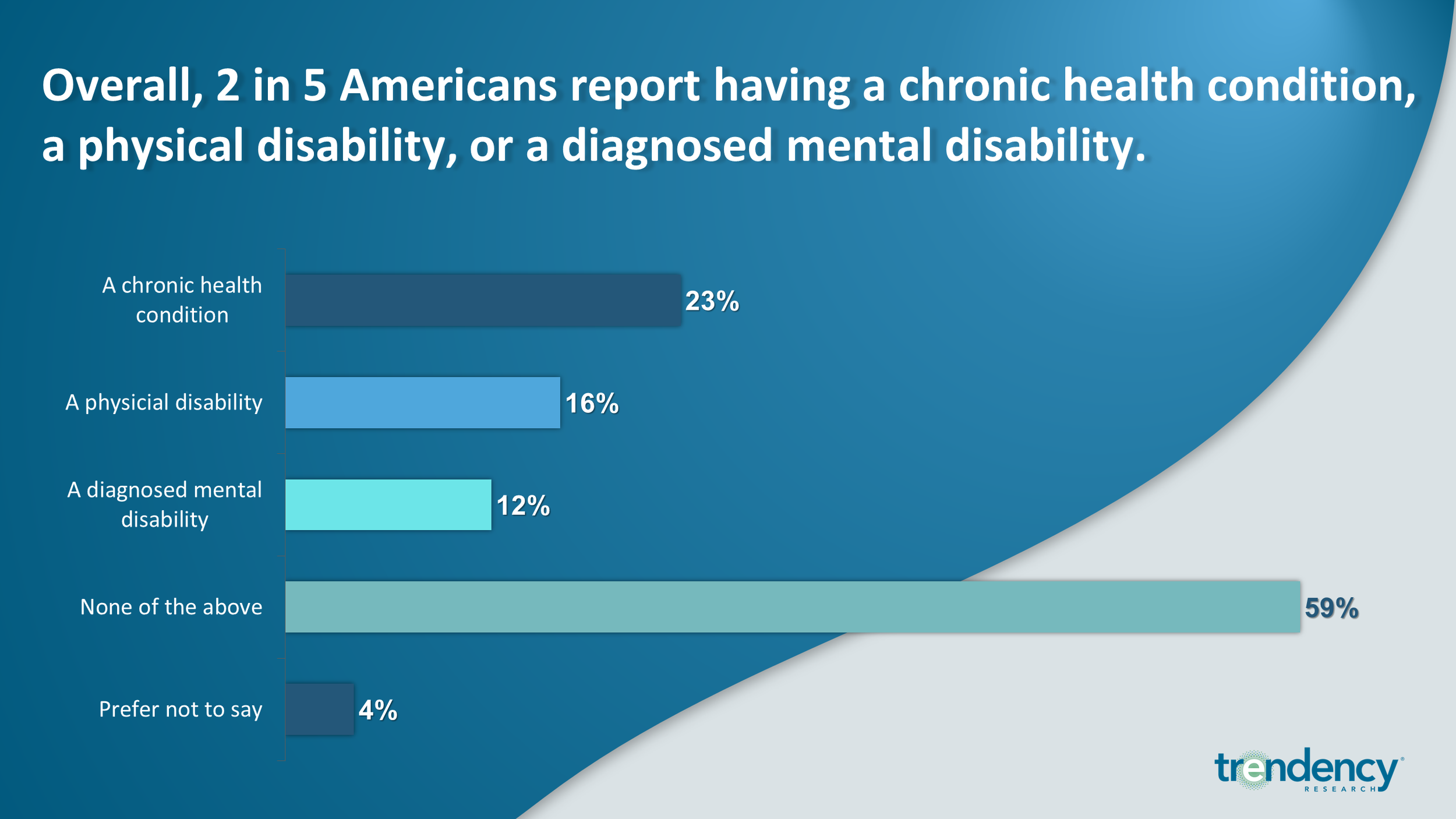Disabilities in the United States
Over the past year we have been asking out national panelists a series of questions on disabilities and how well companies are meeting the needs of those who need accommodations. Of the 7,219 panelists we asked, close to 40 percent of Americans report having a chronic health condition, a physical disability, and/or a diagnosed mental disability.
Women are more likely than men to report having a chronic health condition or a diagnosed mental disability. Men are slightly more likely to report having a physical disability. Not surprisingly Americans over the age of 65 are three times more likely to report having a chronic condition than those under 45. At the same time those under 65 are almost four times as likely to report having a diagnosed mental disability.
Among those who have a diagnosed disability two thirds report that they need some level of accommodations in their day to day life. This includes 2 in 5 who need some reasonable accommodations, and about 1 in 5 who need significant accommodations.
When the need for accommodations are broken out by the type of diagnosed disability we see that a plurality of each category of disability requires some reasonable accommodations. Those with a diagnosed mental disability have the highest concentration of those who need significant accommodations.
Sadly companies in America are not meeting the majority of accommodations needed by American workers with diagnosed disabilities. Just 23 percent say 80 percent or more of their needed accommodations are being met. This is roughly the same concentration of those who are having less than 20% of their needs met.
Looking at the accommodations by the type of diagnosed disability we find that American companies are the best at meeting the needs of those with a chronic health condition. Now before we pop any champaign bottles, lets remember that only a quarter of those with a chronic health condition are having 80% or more of their accommodations met. In addition, there are more Americans with a diagnosed disability who are getting very few or none of their accommodations provided, than those who are having most or all of their accommodations met.






